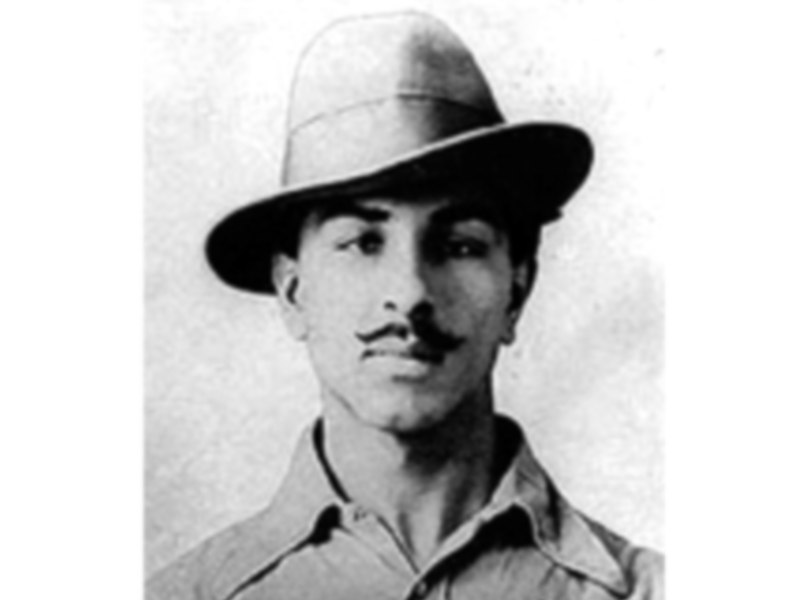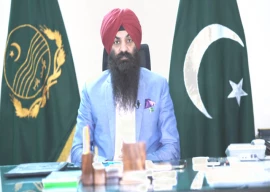
An organisation of youth and students arranged a tour of several city areas on the 90th anniversary of the freedom struggle hero Bhagat Singh to trace his footsteps in Lahore.
The places included Lahore Railway Station where Lala Lajpat Rai was tortured by British personnel, Bradely Hall where Bhaghat Singh lived, the DIG Operations Office where he shot dead English police officer John Saunders to avenge Rai’s death, Lahore High Court where his trial was held, Punjab Assembly where he exploded bombs to protest against anti-labour and people laws, Dayal Singh Library that he used to visit to study and Shadman Chowk where he was hanged.
A large number of students and activists gathered at Abbot Road and walked to the railway station while chanting slogans.
They were also carrying posters inscribed with Bhagat Singh’s revolutionary teachings and pictures.
At Lahore Railway Station, a member of the host Progressive Youth Association, Rai Asad told the participants that freedom movement leader Lala Lajpat Rai along with a large number of local people had gathered outside the station to protest as Simon Commission was visiting the city in October 1928.
Police baton-charged the protesters. Bhagat and his comrades were also part of the protest. As Lala was leading the protest, an English police officer ordered the policemen to torture him to death.
Bhagat and his comrades were deeply moved and they hatched a plan to avenge his death by murdering Saunders.
Asad said Bhagat Singh belonged to a deeply political family and was much familiar with the atrocities of British rulers. Jalianwala Bagh massacre had proved a turning point for him to adopt a life of a revolutionary. Even as a child, he had visited Jalianwala Bagh. As a youth, he witnessed how British police tortured to death the old man he deeply respected.
The participants then moved to Bradley Hall near Data Darbar.
They also visited the National College of Arts where Bhagat studied. Then it was a college for poor people. It was established by an Indian philanthropist as the children of those who took part in the non-cooperation movement were pushed out of government schools. Bhagat’s family was also involved in the movement hence he had to leave his school and join the institution to pursue his studies.
Outside Lahore High Court, Sahar Jaan, another activist, told the participants that Bhagat was arrested in the Punjab Assembly bombing case. The investigations report had revealed that the bombs were thrown at an empty place and they were not meant to cause harm.
However, when he was about to be absolved of the charges, police opened the Saunders murder case against him. Bhagat and his comrades boycotted the court proceedings.
At the end the participants visited Shamdan Chowk that used to be “phansi ghaat” of Camp Jail at the time. They were informed that Bhagat had gained much popularity during the Lahore Conspiracy Case as he had used it to propagate his ideas. There were protests and agitations throughout the sub-continent for his release.
His hanging was scheduled on March 24 but he was executed a day earlier and his body was cremated at an undisclosed location.
In jail, Bhagat had observed one of the longest hunger strikes for the rights of political prisoners.
Published in The Express Tribune, March 24th, 2021.

1732521023-0/biden-(1)1732521023-0-405x300.webp)
1732520496-0/BeFunky-collage-(86)1732520496-0-165x106.webp)
1732519472-0/lamar-(3)1732519472-0-165x106.webp)
1732519298-0/BeFunky-collage-(85)1732519298-0-165x106.webp)













COMMENTS
Comments are moderated and generally will be posted if they are on-topic and not abusive.
For more information, please see our Comments FAQ